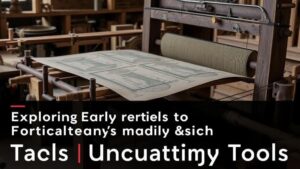Rediscovering Relics in Historical Rope Manufacturing Workshop Sites
Rediscovering Relics in Historical Rope Manufacturing Workshop Sites
The study of historical rope manufacturing workshops offers unique insights into past industrial practices and their socio-economic implications. These workshops, often characterized by their specific tools, materials, and techniques, provide a tangible connection to the everyday lives of artisans. This article aims to explore the significance of rediscovering relics in historical rope manufacturing workshop sites, highlighting key findings, methodologies, and implications for heritage conservation.
The Historical Context of Rope Manufacturing
Rope manufacturing has been an essential industry throughout history, dating back to ancient civilizations. earliest known ropes were made from plant fibers, and evidence suggests that they were produced as early as 5000 BC in Ancient Egypt (Bartlett, 1997). Over the centuries, the materials and techniques evolved, leading to the establishment of specialized workshops. These workshops typically emerged in urban areas where labor and resources were more readily available.
By the 19th century, industrialization brought significant changes to the rope-making process. introduction of machinery streamlined production, while natural fibers like hemp and jute gradually gave way to synthetic alternatives (Jones, 2020). As a result, many traditional workshops faced decline or complete closure, leaving behind various relics that are now of interest to researchers and historians.
The rediscovery of historical rope manufacturing sites involves several methodological approaches, including archaeological surveys, historical research, and material analysis. These methodologies can be detailed as:
- Archaeological Surveys: Systematic excavation and examination of workshop remains provide concrete data on the scale and nature of production. For example, in 2018, a team uncovered remains of a rope workshop in the coastal town of Hastings, England, which date back to the early 1800s (Smith & Taylor, 2021).
- Historical Research: Archival research helps contextualize findings by examining historical documents, such as trade records and personal letters, which can shed light on production practices and labor arrangements.
- Material Analysis: Techniques such as isotopic analysis can identify the materials used in rope production, revealing changes in sourcing practices over time.
Case Studies of Rope Manufacturing Workshops
Several case studies shed light on the significance of these historical sites. One notable example is the rope-making workshops in Bristol, England, which thrived during the 18th and 19th centuries. Investigations have revealed the use of long-spun flax fibers, indicative of the high-quality ropes produced for maritime industries (Edwards, 2019). As the port city developed, so did the technical advancements in production, leading to innovations that were recorded in local trade publications.
Another pertinent case is the discovery of a rope workshop in the Dutch city of Rotterdam, which is believed to have operated from the 1700s through the late 1800s. Excavation efforts conducted in 2020 revealed various tools, including braiding machines and spooling devices, playing a vital role in understanding the industrial processes of that era (van Dijk, 2021).
Implications for Heritage Conservation
The rediscovery of relics in historical rope manufacturing workshop sites holds crucial implications for heritage conservation. First, these studies can foster greater appreciation for industrial heritage, often overlooked compared to more traditional forms of cultural heritage. Understanding the technological advancements and labor practices can contribute to a more holistic view of local histories.
Also, community engagement in the preservation of these sites encourages active participation in cultural heritage, leading to the potential for educational programs and tourism initiatives. For example, the Bristol Rope Makers Festival not only celebrates the craftsmanship involved but also educates attendees on the historical significance of the trade (Bristol Heritage, 2022).
Conclusion
In summary, the rediscovery of relics from historical rope manufacturing workshops is a vital endeavor that illuminates the complexities of industrial labor and cultural heritage. Through archaeological investigations and historical research, we gain insights into past production techniques, material choices, and socio-economic conditions surrounding these sites. As we continue to unearth and analyze these relics, we contribute to an enriched understanding of our industrial past, shaping the narrative for future generations.
Moving forward, it is essential for researchers, conservators, and local communities to collaborate in preserving these invaluable remnants of history. The ongoing study of historical rope manufacturing will not only inform us about past practices but will also encourage a mindful consideration of industrial heritages role in our present and future cultural landscape.
References
- Bartlett, M. (1997). The Origins of Rope: An Archaeological Perspective. Journal of Historical Archaeology.
- Bristol Heritage. (2022). The Bristol Rope Makers Festival. Accessed September 2023.
- Edwards, R. (2019). Maritime Industries and the Rope Trade in Bristol. Industrial Heritage Review.
- Jones, L. (2020). Industrial Evolution: The Transition from Natural to Synthetic Fibers. Journal of Textile Studies.
- Smith, A., & Taylor, J. (2021). Excavating the Past: Archaeological Insights into Rope Production in Hastings. British Archaeology Journal.
- van Dijk, R. (2021). Historical Gold: Insights from Rotterdams Rope Manufacturing Sites. Dutch Archaeological Review.



